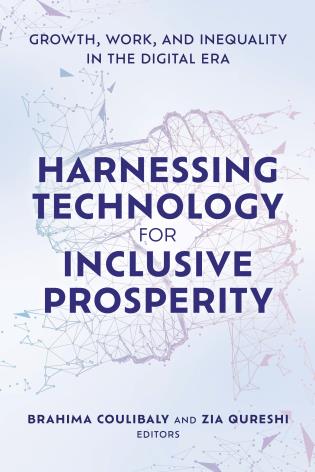This viewpoint is part of Foresight Africa 2024.
The age of cash is ending. The digital revolution seems unabating. Africa cannot afford to be left behind.
A Central Bank Digital Currency (CBDC) is an electronic form of a country’s official currency. They have recently become a global phenomenon with about 131 countries, representing 98% of global GDP, exploring their issuance as of November 2023.
In the Central Bank of Nigeria (CBN), work on a CBDC began in 2017, with extensive studies, stakeholder consultations, use case identifications and testing in a sandbox. A critical objective of this preliminary work was to first establish compelling cases and potential benefits for a digital currency in Nigeria. This phase highlighted such benefits to include rapid financial inclusion, better monetary policy formulation, reduced cost of cash processing, and improved efficiency of payments.
Given these benefits, a multidisciplinary Working Group was inaugurated and tasked with leading the effort to create a CBDC (named the eNaira), beginning with preparing a “Design Paper”. This document laid out the currency’s architecture, the options for and choice of distributed ledger technology, the risks and mitigants, the roles of different stakeholders, and the implementation roadmap, amongst others.
Since the eNaira’s launch in October 2021, there has been remarkable progress in reaching some of the aforementioned objectives. For example, over N20 billion (about USD 20 million) has been minted, and about 28.4 million new wallets have been created with over 2.2 million transactions valued at about N108 billion carried out on the platform.1
Similar to Nigeria’s case, these benefits appear to make compelling arguments for issuance of CBDCs by other African Central Banks. For those who might embark on this journey, there are four major risks to be mindful of. First is the risk of banking sector disintermediation, as customers move deposits into wallets. Second, CBDCs may be vulnerable to cyberattacks that could lead to financial losses and a loss of public confidence. Third, operational risks may arise from maintaining nonstop functionality. Fourth, privacy concerns might also make citizens view CBDC usage as risky because transactions are easily traceable.
The CBN addressed these risks with a combination of well-designed systems, limits on wallet balances, strong security protocols, robust engagement with stakeholders, and striking the right balance between transparency and privacy.
These efforts have elicited six key lessons, namely:
- Early collaboration with commercial banks is critical to forestall disintermediation.
- A robust digital identity for consumers must precede the pursuit of a CBDC.
- A phased implementation approach is critical to contain and manage disruptions.
- Adequate internal staffing must be available to maintain the system.
- Offline capabilities are essential, given Africa’s low internet penetration.
- Given that CBDCs are faster to produce, their minting, storage, issuance, and distribution must have strong governance mechanisms.
Overall, the prospects of digital currencies appear promising. The age of cash is ending. The digital revolution seems unabating. Africa cannot afford to be left behind. We need to be proactive in this race, and mindful that one must build the barns before the harvest.
-
Footnotes
- Data comes from the Central Bank of Nigeria’s digital dashboard.





Commentary
Should African central banks pursue digital currencies?
July 19, 2024